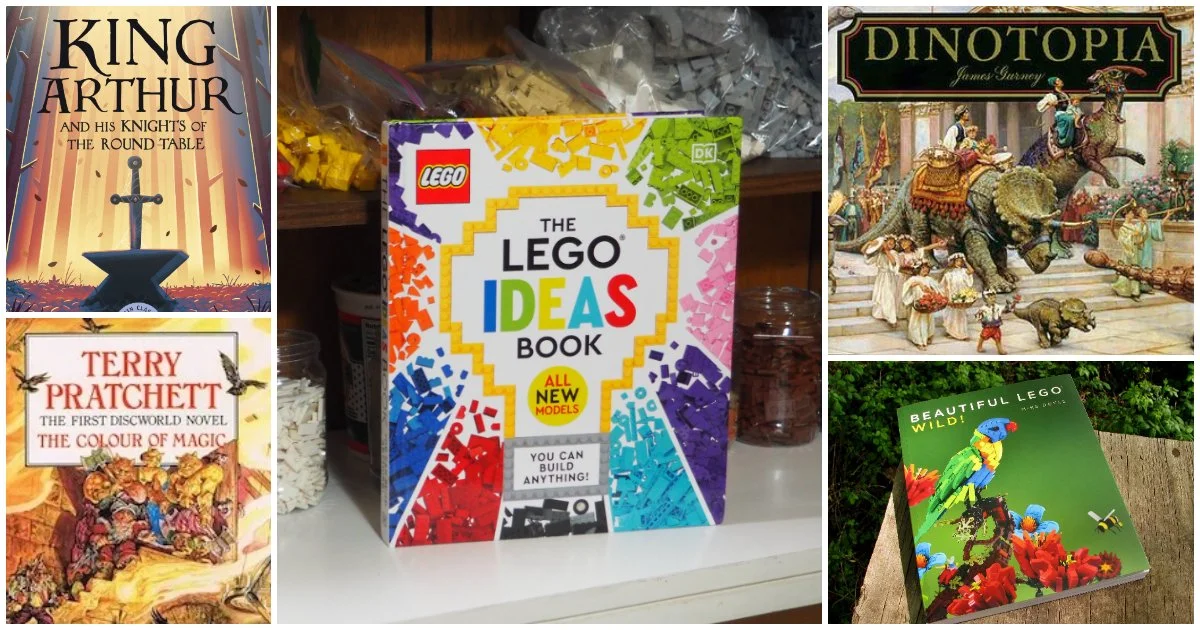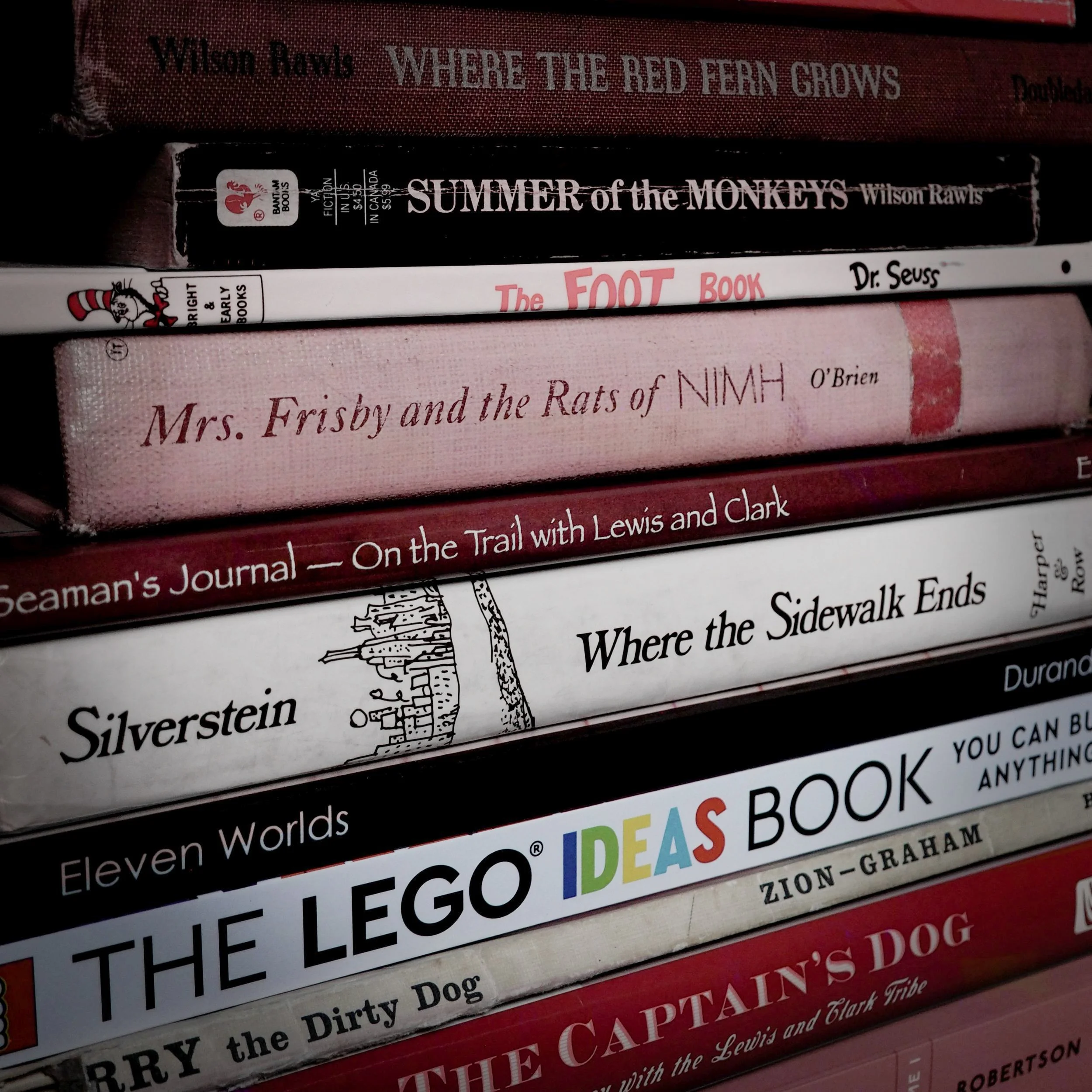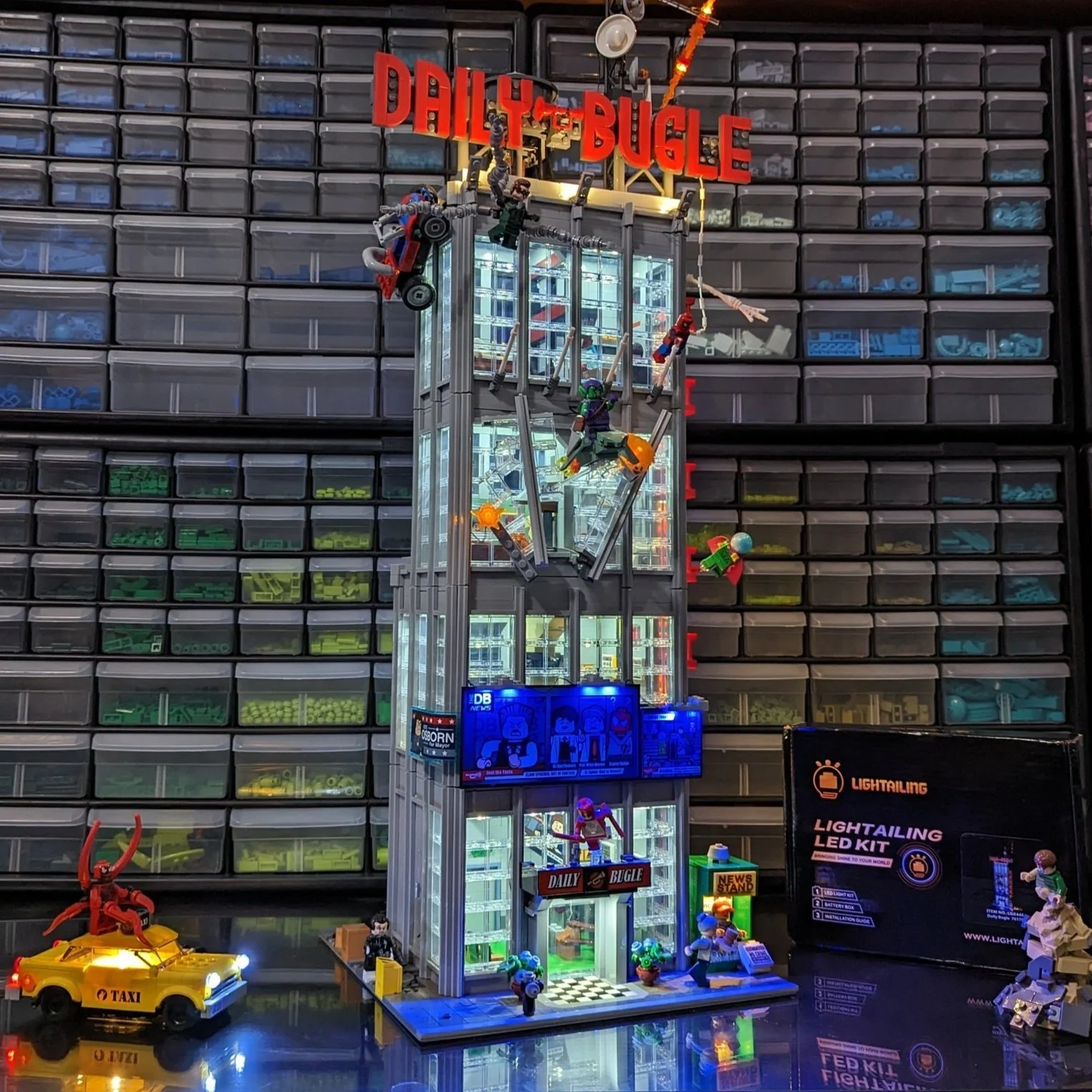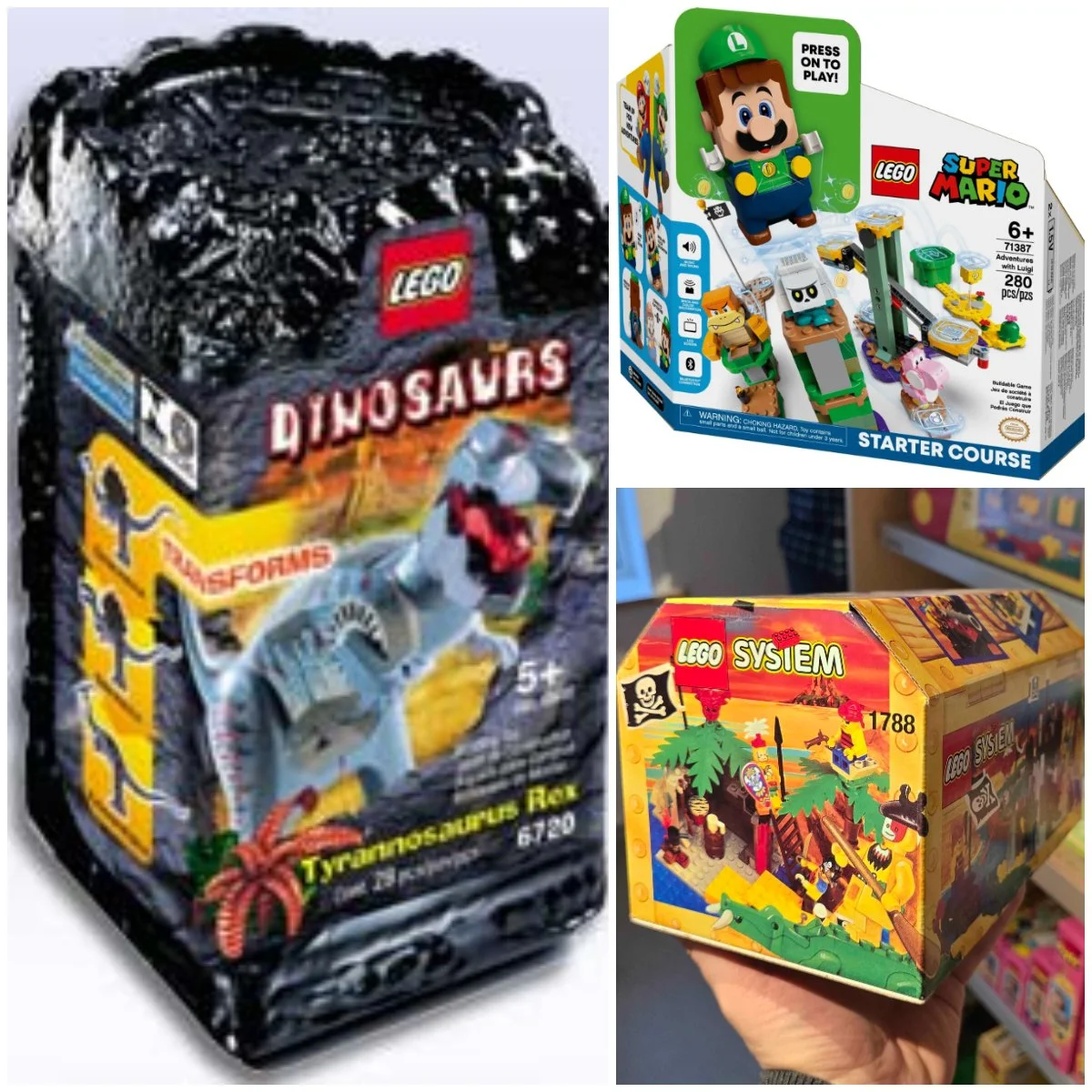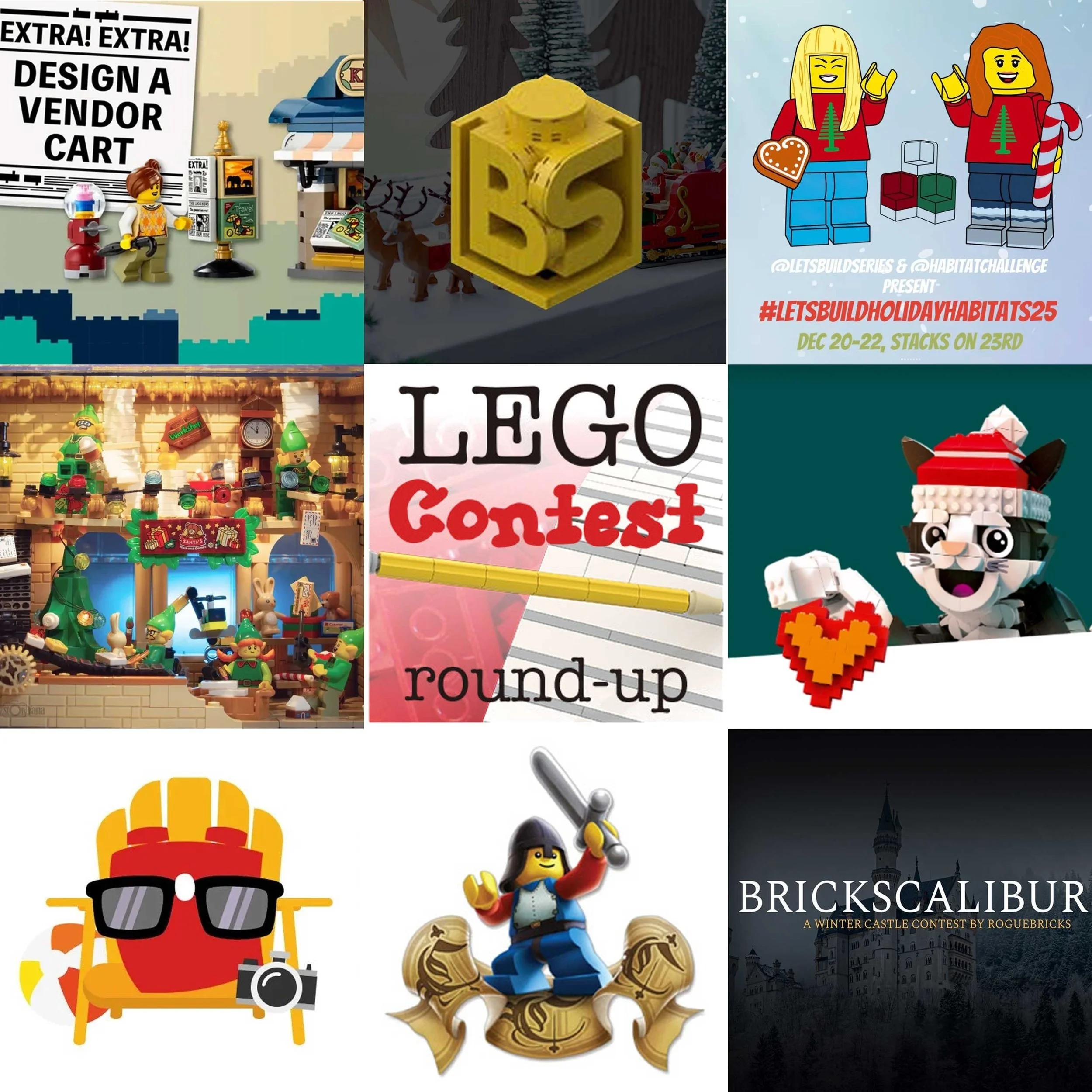Building from Books: Getting Inspiration from Information
/Have you ever walked down a street full of unusual houses, and started mentally building them out of LEGO bricks? Or maybe you’ve sat outside staring at trees and wondered whether to use Mixel joints or clips to achieve those organic angles. And you’ve surely dreamed of building your favorite epic movie scene, and finally learned enough about lighting to perfectly imitate the shot.
As LEGO builders, we’re well aware that we can get inspiration anywhere—so we tend to keep our eyes open and pay attention to visual art wherever we see it. But what if we search a little deeper? Can we get inspiration from what we read as well as what we see?
I have to admit that this article is a bit experimental. I haven’t consciously built from books nearly as much as I wish I had. But out of the nearly 1,000 MOCs I’ve built in the last ten years, I can trace 1% or so back to a book. So let’s sit down, and take a look at four different ways LEGO builders can find inspiration from what we read as well as what we see: characters, concepts, stories, and techniques.
Characters from Books
We’ll start off with what I think is the coolest way to bring inspiration from a book into a MOC. Developing a complete character is not something that’s easy to do, and it’s hard to find time or creativity to fully flesh out a minifigure or large-scale character’s background just for the purpose of making them look more “alive.” But by taking inspiration from a book’s character, you can get your background ready-made and maybe tap into a shared knowledge with your viewers that helps your creation come to life.
In this case, I took inspiration from the varied tales I’ve read about the Knights of the Round Table. Especially in the case of the three center knights, I felt like that helped me give them a personality that comes across just in their facial expressions and the way they are posed.
As an example of a larger-scale character that was inspired by a book, take a look at Eero Okkonen’s Archchancellor from Discworld. I don’t know whether or not Eero also had reference art, but in any case, this character with his determined pose, fancy hat, and flowing beard is full of life and personality.
Concepts from Books
An even more direct way to connect a book to a build is by recreating a concept you’ve read about. In this case, my brother Isaiah recreated a joke in our old high school algebra book.
Of course, lots of books have art inside them and some are even dedicated to that. This is obviously an easier way to turn the book’s concept into a brick reality since someone else has already done the basic visualization for you. This build by Shawn Snyder is based on the illustration-rich Dinotopia series.
But you can easily take inspiration from something less concrete than an already-drawn concept. I ran with nothing more than a vague Dr. Seuss theme for the following messy room and wacky creature.
There are good opportunities to take non-fictional concepts and turn them into LEGO builds, too. Here are a few other scenes my brother and I built that are almost subconsciously book-inspired.



Stories from Books
Now we come to the obvious way to build a book-inspired creation. This is similar to a movie-inspired creation, only you as the builder will have to do most of the visualization. These story scenes tend to focus on minifigures (or brick-built figures), usually with lots of action evident in their poses.
In this first example, Isaiah built and adapted a drawbridge escape scene from a story in the Sir Cumference series—taking advantage of the illustrations to get some ideas, but working primarily with the written story.
This next scene is from Tolkien’s story of Beren and Lúthien. W. Navarre’s build also take inspiration from concept art that in turn was based on the story—between the two, the tension of this dramatic moment is gripping.
This next scene is one I built from the biblical story of Daniel. Again, there’s a heavy focus on minifigures to build a sense of story.
Frequently, LEGO builders write their own stories to accompany their builds; but trying to build within the parameters of someone else’s story, or a historical event, is a good way to challenge yourself.
Techniques from LEGO-Specific Books
This last category takes us away from ordinary word-focused books to LEGO-specific books. These tend to be picture-heavy, so this is a different kind of “building from books.” But it’s not like building from visual art since you’ll usually want to adapt rather than copy techniques you get from LEGO books—just as you would adapt techniques you see in other builders’ creations on the web.
Books like The LEGO Ideas Book or The LEGO Ideas Book: New Edition are specifically meant to give you inspiration and techniques to use for your own creations. I’ll speak to the one I have; the New Edition. These books tend to be geared at an audience that’s fairly new to MOCing; those of us who have been doing it for a long time probably already have a list of things to build that will keep us busy for years. That’s not to say that you can’t pick up some clever pointers, and a newer MOCer may find the build-challenge aspect of the book motivational. Building through a wide variety of themes that don’t necessarily interest you is a great way to develop your skills.
Other books are less technique oriented, but provide plenty of inspiration and technique learning if you’re good at reverse engineering LEGO creations in your head. Beautiful LEGO, Beautiful LEGO 2: Dark, and Beautiful LEGO 3: Wild! fall into this category.
In Conclusion…
If you’re a reader (and in my totally unbiased opinion as an author, everyone should be a reader), why not try getting some inspiration for your next LEGO build from a book? The challenge of turning words into a visual reality is a fun one. Plus, having a backstory helps you think of and include the little details that make a character, a scene, or a creation come alive. You don’t have to take the entire inspiration for your creation from a book—it could be just a little minifigure byplay in a corner, or a new type of flower you were reading about on the windowsill, or some other tidbit tucked away in a corner. Let your imagination run wild and give it a try!
The LEGO Group and DK Books sent BrickNerd a copy of the LEGO Ideas Book New Edition. Any opinions expressed in this article are those of the author.
Have you built any MOCs inspired by a book? Let us know in the comments below.
Do you want to help BrickNerd continue publishing articles like this one? Become a top patron like Charlie Stephens, Marc & Liz Puleo, Paige Mueller, Rob Klingberg from Brickstuff, John & Joshua Hanlon from Beyond the Brick, Megan Lum, and Andy Price to show your support, get early access, exclusive swag and more.

